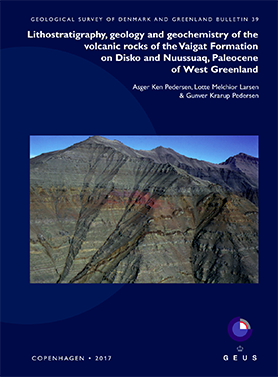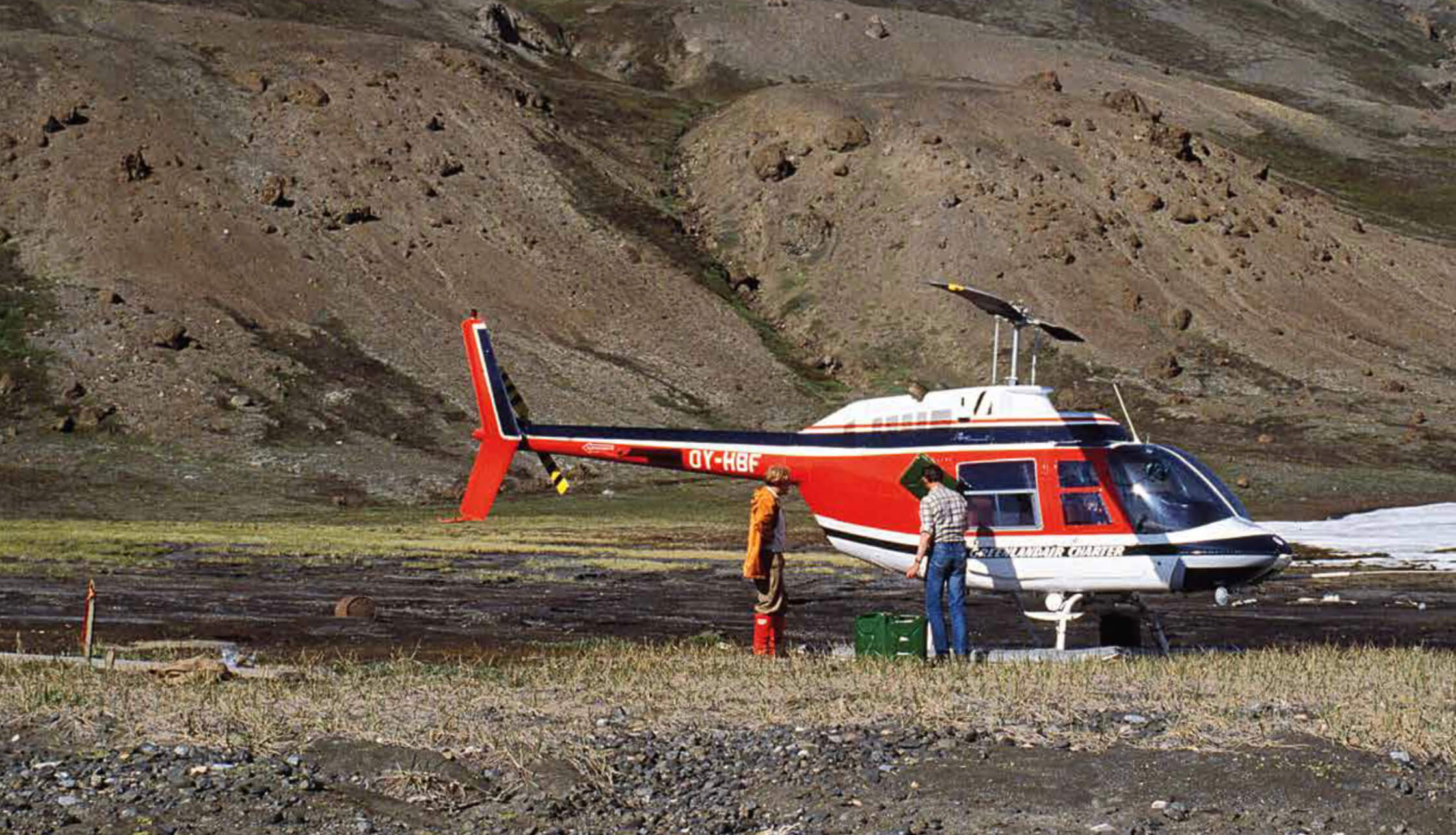Lithostratigraphy, geology and geochemistry of the volcanic rocks of the Vaigat Formation on Disko and Nuussuaq, Paleocene of West Greenland
Asger Ken Pedersen, Lotte Melchior Larsen and Gunver Krarup Pedersen
The upper Cretaceous–Tertiary Nuussuaq Basin in West Greenland contains a many kilometres thick succession of siliciclastic sediments and overlying volcanic rocks. The first studies in the early 19th century centred on the coal and fossils in the sediments and the minerals in the volcanic rocks, including famous occurrences of native iron. The present focus of interest includes modern stratigraphic and volcanological studies to decipher the basin evolution and support hydrocarbon exploration.
The Nuussuaq Basin is the only onshore analogue for the sedimentary and volcanic basins offshore West Greenland primarily known from seismic data. The excellently exposed volcanic rocks, in particular giant foreset-bedded hyaloclastite deposits, are of a size comparable to seismic sections and therefore directly applicable to their interpretation.
This bulletin presents the lithostratigraphy, geology and geochemistry of the Paleocene volcanic rocks of the Vaigat Formation on Disko and the major part of the Nuussuaq peninsula. The Vaigat Formation in this area is up to 1600 m thick and composed mainly of olivine-rich picrites, with ten formally defined members and 20 informal units. The comprehensive descriptions and analyses of each member and unit represent a synthesis of many years of work and are intended to serve as a guide for future studies, including exploration for mineral deposits associated with some units of the formation.
A companion bulletin on the volcanic rocks of the Maligât Formation overlying the Vaigat Formation was published in 2018.






